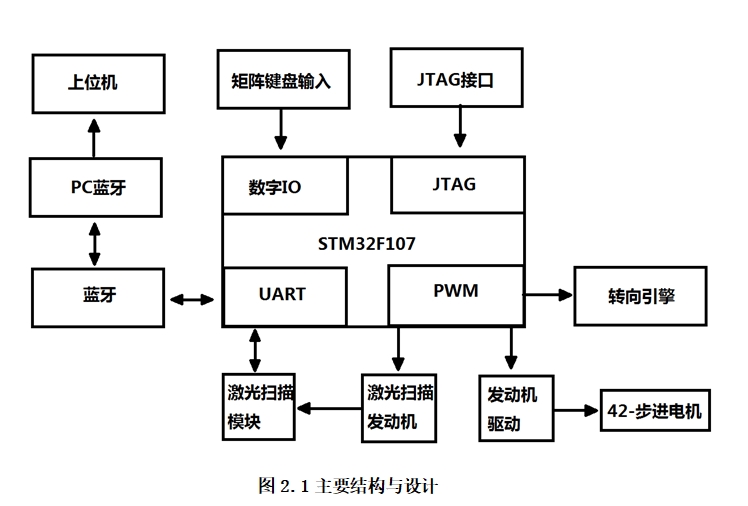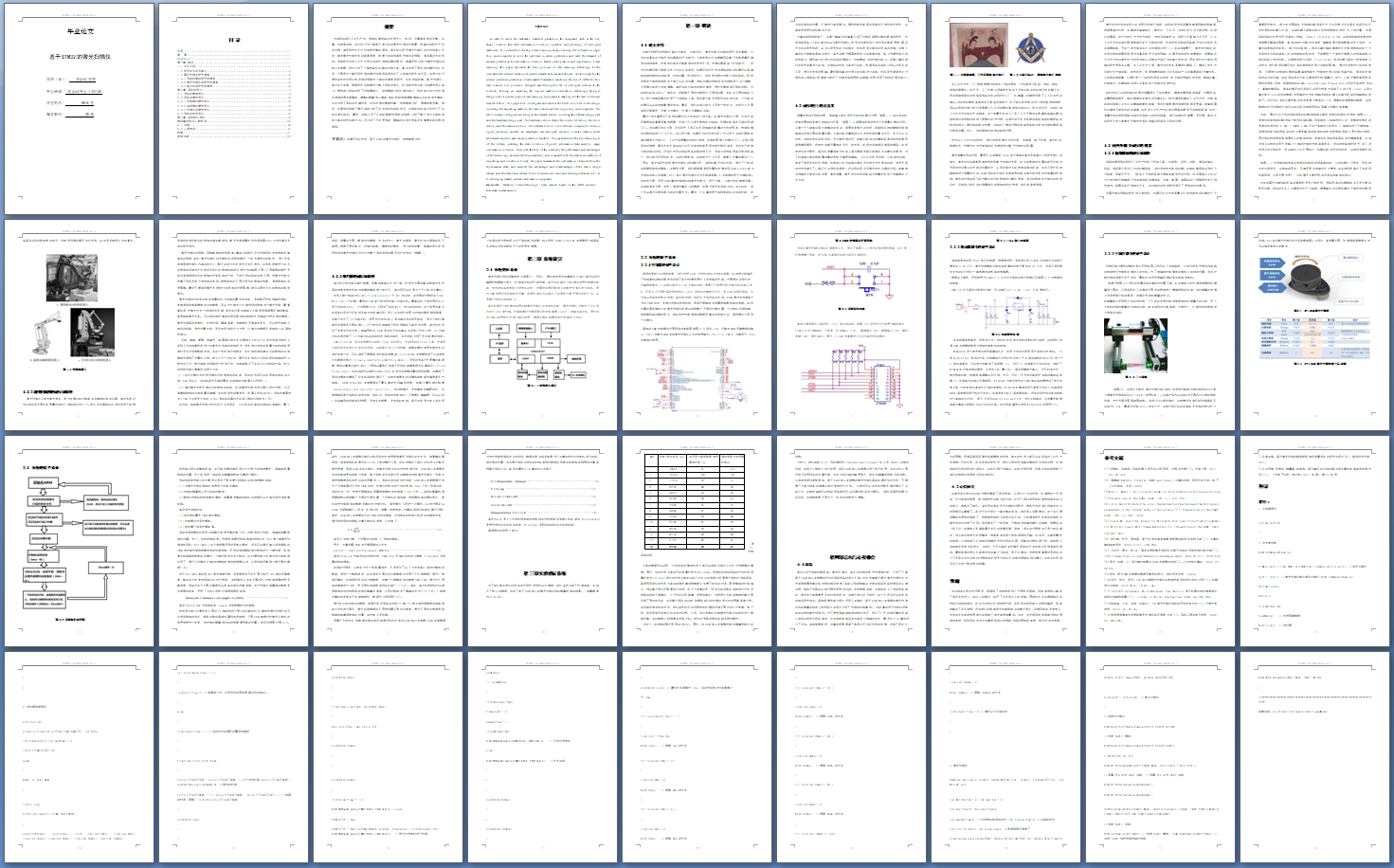基于STM32的激光扫描仪的设计

基于STM32的激光扫描仪的设计(任务书,开题报告,外文翻译,论文14500字)
摘要
为实现自动化工业生产中,智能机械设备对货物大小、形状、位置等信息的采集、运算、处理等功能。拟计划开发一套基于单片机的激光扫描定位装置,来解决实际生产中的问题,满足现代化生产对信息采集的需求。本文将从研究激光扫描仪的目的和意义出发,阐述激光扫描技术的基本原理,简要介绍在和本研究相关的领域,当前国内外的现状。后续针对目前工业生产中对自动化拆装机器的需求,本篇采用ARM为激光扫描仪的核心处理器,设计开发了一套智能化的解决处理方案,重点改进了原有的机器可视化技术,力图设计一套泛用性强的激光扫描设备来弥补了之前相关研究的不足。在设计的过程中首先将对设计涉足到的领域进行相关的调查和研究,包括拆垛机械、激光扫描仪、单片机开发等,根据研究的结果进行整个系统的设计,包括软件设计部分和硬件设计部分。硬件部分详细说明了控制器部分,驱动器部分和扫描仪部分,软件部分则分为扫描仪得到信号处理模块、调整机械臂抓斗模块、电机转动速度调整模块以及各种保护模块。论文说明了系统的关键技术,包括货物的数据收集,信息数据分析,图像信息采集。然后,在导师的帮助下通过实验分析了该技术的性能和优点,与传统的拆垛方式进行了比较并得出结论。最后,总结讨论了从实验数据中得到的信息,分析了整个设计方案和传统方案的的优劣势对比。还讨论了开发更智能,精确的自动化设备至关重要的新问题和挑战。
[版权所有:http://DOC163.com]
关键词:机器可视化技术,基于ARM的激光扫描仪,信息数据分析。
Abstract
In order to realize the automatic industrial production, the equipment, such as the size, shape, location and other information collection, operation and processing of intelligent machinery. It is planned to develop a laser scanning and positioning device based on single chip microcomputer to solve the problems in actual production and meet the demand of modern production for information collection. Based on the purpose and significance of laser scanning, this paper expounds the basic principle of laser scanning technology, briefly introduces the current situation of current research at home and abroad. The follow-up for the current industrial production of automated disassembly machines, the use of ARM for the laser scanner core processor, designed and developed a set of intelligent solution to the solution, focusing on improving the original machine visualization technology, trying to Design a set of general purpose laser scanning equipment to make up for the lack of relevant research before. This paper first investigates and studies the fields involved in the design, including the unpacking machine, the laser scanner and the single chip microcomputer. The whole system is designed according to the research results, including the software design part and the hardware design part. The hardware section details the controller section, the drive section, and the scanner section. The software section is divided into a scanner to obtain a signal processing module, an adjustment arm arm grab module, a motor rotation speed adjustment module, and various protection modules. The paper describes the key technologies of the system, including the data collection of goods, information data analysis, image information collection. Then, with the help of the instructor, the performance and advantages of the technology are analyzed experimentally, and compared with the traditional method of unpacking and conclusion. Finally, the paper summarizes the information obtained from the experimental data, and analyzes the advantages and disadvantages of the whole design scheme and the traditional scheme. It also discusses new issues and challenges that are critical to developing smarter, accurate automation equipment. [资料来源:https://www.doc163.com]
Keywords: Machine visual technology,Laser scanner based on the ARM processor,Information data analysis
[资料来源:https://www.doc163.com]


目录......................................................................I
摘 要...................................................................II
Abstract................................................................III
第一章 绪论...............................................................1
1.1论文介绍...............................................................1
1.2研究的目的及意义.......................................................2
1.3国内外相关研究调查.....................................................4
[资料来源:http://www.doc163.com]
1.3.1拆垛机械的研究和调查 ................................................4
1.3.2激光扫描仪的研究和调查...............................................6
1.3.3单片机的研究和调查...................................................8
第二章 系统的设计.........................................................9
2.1系统的整体设计.........................................................9
2.2系统的硬件设计........................................................10
2.2.1控制器的硬件设计....................................................10
2.2.2驱动器的硬件设计....................................................12
2.2.3扫描仪的硬件设计....................................................13
2.3系统的软件设计........................................................15
第三章 实验验证系统......................................................18
第四章总结及心得体会.....................................................20
4.1总结..................................................................20 [版权所有:http://DOC163.com]
4.2心得体会..............................................................21
致谢.....................................................................21
参考文献.................................................................22
[来源:http://Doc163.com]
